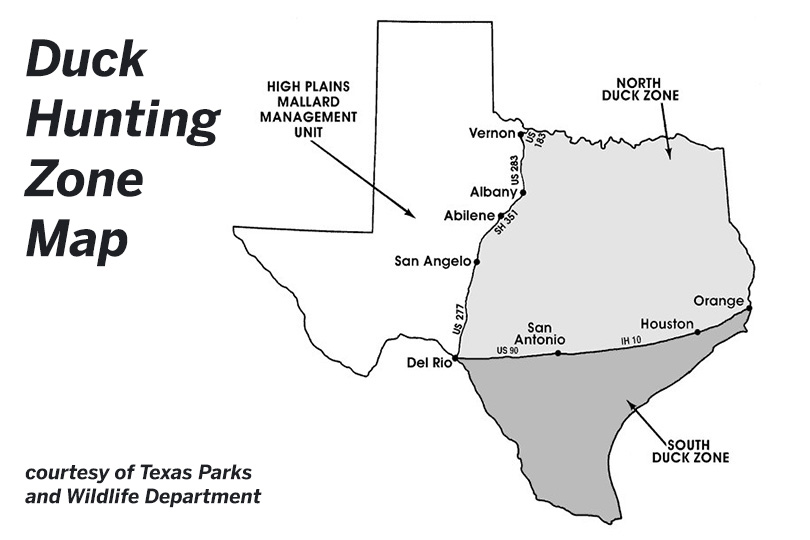By Jessica Domel
Multimedia Reporter
Due to the lingering drought across much of Texas, waterfowl hunting could be difficult for hunters without access to property with fresh surface water.
“Obviously the word ‘water’ is in ‘waterfowl,’ so it’s important that we have water on the landscape, and for the vast majority of the (duck) species we’re talking about, we need fresh water,” Kevin Kraai, Texas Parks and Wildlife Department (TPWD) waterfowl program leader, said. “Right now, there’s just a real lack of abundance of freshwater on the landscape in Texas. From North Texas, the Red River, all the way to the Golf Coast is in extreme drought.
The exceptions are parts of deep South Texas and the Panhandle that received beneficial rainfall this summer.
“The one little bright spot this summer—we saw extreme rainfall up here in the Texas Panhandle,” Kraai told the Texas Farm Bureau Radio Network. “Some of that water is still on the surface and will probably be a pretty high concentration area for waterfowl this winter. Fingers-crossed that things change, and we can start getting some rain in East Texas and down along the Texas coast to start filing wetlands, rivers, pongs and lakes. Otherwise, you’re going to have a whole bunch of people that don’t have anywhere really to duck hunt.”
Hunters with access to areas with fresh water, whether it’s pumped there or available naturally, will likely have the best chances this hunting season.
“We just saw that coming out of the early teal season. There was a handful of people that probably had the best seasons they’ve ever seen in their life because they had pretty much all of the water and all the ducks,” Kraai said.
If the state receives additional rainfall before or during duck hunting season, conditions could change, and the state could see more waterfowl.
“Without question, rain improves success for hunters, and it improves the amount of birds that are in the state of Texas,” Kraai said. “They simply will just go somewhere else if they don’t have what they need. Big rain events are the main attraction to the state.”
The availability of food and fresh water aren’t the only factors waterfowl hunters must consider. The number of available waterfowl migrating this way also play a role in hunters’ success.
The United States Fish and Wildlife Service (USFWS) completed its May Waterfowl Breeding Population and Habitat Survey which had mixed results. The total number of ducks decreased 18 percent from the previous year. Green-winged teal, northern pintails and canvasbacks were the only species that increased in number from the previous May.
“Some species did very well, and some species didn’t do so well. But the good news is the species that are really important to the state of Texas either did very well or had an average productive year,” Kraai said. “Pintails, blue-winged teal, northern shovelers, gadwall and green-winged teal—they’re all doing quite well.”
The northern pintail population increased 24% over last year while the number of green-winged teal in the U.S. increased 16%.
“Species like mallards, which are becoming less and less important to the state of Texas, they tend to be staying further north and east of us these days, but species like mallards actually saw a pretty significant decline,” Kraai said.
The number of mallards declined 18% from last year, and blue-winged teal declined 19%.
“The reality is, we’re not hunting the population estimate. We’re actually hunting the reproductive success. The estimates are before they started breeding,” Kraai said. “Now they have young. There’s a bunch of juvenile birds heading this way. There are some really good stories coming out of the prairies of lots of broods and lots of young ducklings on the landscape.”
The young waterfowl help increase hunter success.
“They’re a little more gullible, more readily coming into duck decoys and duck calls,” Kraai said. “So, that’s the good news.”
The regular duck hunting season on the High Plains Mallard Management Unit is Oct. 28-29 and Nov. 3-Jan. 28, 2024.
In the north zone, the regular season is Nov. 11-26 and Dec. 2-Jan. 28, 2024.
The south zone is Nov. 4-26 and Dec. 9-Jan. 28, 2024.
Hunters are encouraged to double-check the Outdoor Annual prior to hunting for all of this year’s regulations.

